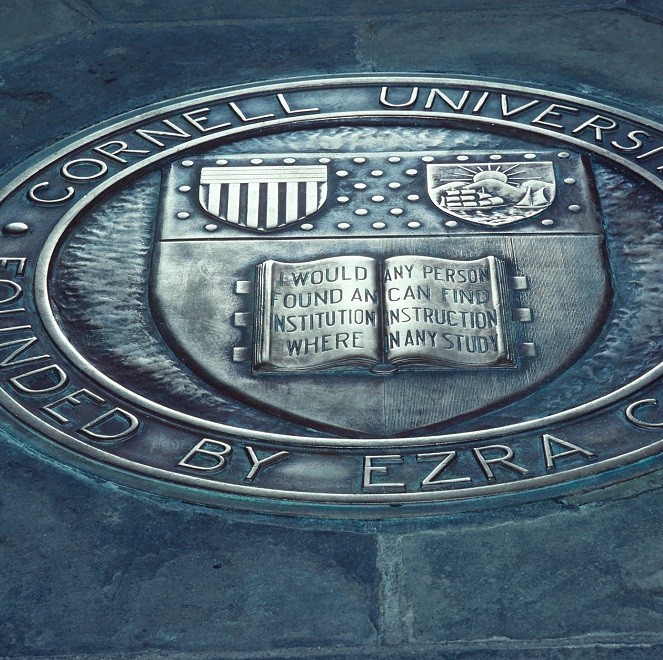News and Events
Full listing
May 23, 2013
May, 2013: Alan Alda and staff from the Alan Alda Center for Communicating Science at Stony Brook University visited campus May 21-24 to offer science communication training to two workshop tracks for about 50 Cornell faculty members. This workshop was hosted by the Kavli Institute at Cornell for Nanoscale Science. Funding was also provided by the Kavli Foundation, the Cornell Center for Materials Research (CCMR), and the Energy Materials Center at Cornell (emc2).
May 22, 2013
Researchers from the Kavli Institute at Cornell and the Energy Frontier Research Center at Columbia University have grown high-quality crystals of molybdenum disulfide (MoS2), the world's thinnest semiconductor, and studied how these crystals stitch together at the atomic scale to form continuous sheets. The study is published in the May 5, 2013 issue of Nature Materials.
April 18, 2013
April, 2013: KIC Co-Director David Muller and Member Sol Gruner have tweaked "sol-gel" chemistry to create nanoparticles with separate compartments that could carry two or more drugs to the same location, with precise control over the amounts.
April 1, 2013
April, 2013: The Kavli Foundation applauds President Obama's all-hands-on-deck call to unlock mysteries of the human brain. Scientists who propelled the Brain Activity Map Project, including KIC Director Paul McEuen, attend the presidential announcement in Washington.
February 20, 2013
February, 2013 Nobel laureate Robert C. Richardson, an experimental low-temperature physicist and one of Cornell’s most influential administrators, died Feb. 19 at a nursing home in Ithaca, N.Y. Richardson served as Cornell’s first vice provost for research from 1998 to 2007 and also served as director of the Kavli Institute at Cornell for Nanoscale Science and of the Laboratory of Atomic and Solid State Physics.
February 17, 2013
February 2013: Scientists studying high-temperature superconductivity know that the introduction of dopant atoms leads to the development of superconductive behavior. However there is a lack of experimental work showing what these dopants do to the atomic-scale electronic structure of superconductive materials. Professor of physics and KIC member J.C. Séamus Davis has now imaged the effects of these impurity atoms.
February 17, 2013
February, 2013: The New York Times on Monday revealed that the Obama administration will in its next budget proposal seek to launch a major research initiative, known as the Brain Activity Map (BAM) project, that could ultimately greatly expand our understanding of the healthy and diseased human brain.
January 15, 2013
January, 2013: Materials scientists at Cornell, including KIC member Kyle Shen, are one step closer to high-temperature superconductors. Read the paper highlighting this research in Physical Review Letters.
December 18, 2012
December, 2012: Advances in detector technology, in concert with new synchrotron sources, x-ray optics, and computational methods, are opening new ways to probe the structure and dynamics of matter.
December 14, 2012
December, 2012: Cornell researchers, including KIC members Paul McEuen and Michal Lipson, have now demonstrated synchronization at the nanoscale, using nothing but light. This research was published on December 5 in Physical Review Letters.

